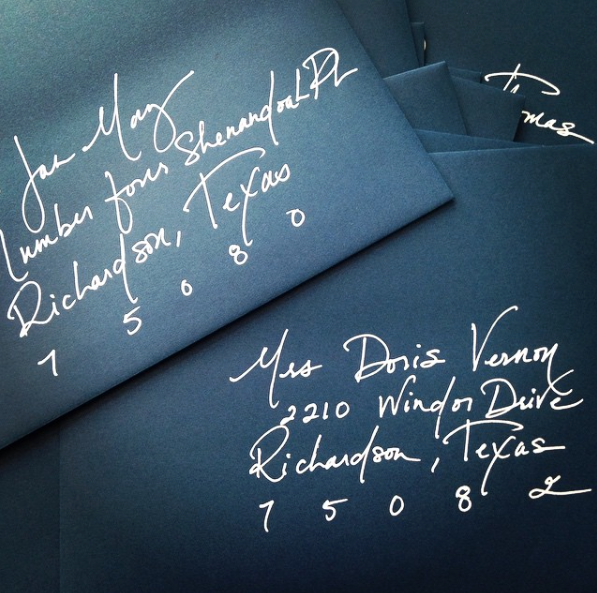Wedding Invitation Standards
Wedding invitation etiquette and wording can often be confusing and a bit intimidating. Below is an list of what's traditionally included in an invitation suite. More and more weddings are moving away from purely traditional invitation suites, but an invitation suite without guidelines is a wedding day begging for chaos.
The Invitation
Your wedding invitation is the grand announcement for your big day and should include all important information such as your full names, date, time, and venue along with address. (Check out this site or my Etsy Shop)
Reception Card
Should your wedding ceremony and reception be held in a different area, you should include a reception card featuring detailed information instead of cluttering your invitation with this information. Reception cards include time, location name, and address.
Response Card
This is filled out by guests and mailed in order for you to calculate attendance. The response card should be mailed 3 weeks before the event and have a clear due date to encourage a quick response. The card design should include check boxes that indicate if a guest can attend, and if so, the guest can select their meal choice. Should you want to encourage a personal message, leave space on the card for a quick note of excitement or regret. The cards should be combined with a stamped addressed envelope, usually to be sent to the brides parents or the paying party. A less traditional, but acceptable option is to use RSVP postcards. They are also money savers as well because postage is cheaper and there is no need to purchase additional envelopes.
Accommodation Card
If you are hosting out-of-town guests, you need to provide them with all listing preferred hotels and addresses.
Direction Card
Provide your guests with directions to the ceremony and reception. Ceremony directions should be on the front while reception directions are on the back.
Wedding Map
If you want a unique and fun way to display hotel information, itinerary, and directions, consider a custom map! Of course I am partial to wedding maps, not because I am one of the original designers, but because they are economical, pretty, and memorable. When including a Direction Card or Wedding Map the address is not included on the invitation since it would be redundant.
Inner Envelope
The inner envelope is a separate envelope that goes inside the main outer envelope – your actual invitation and enclosures go inside the inner envelope. It is typically addressed with the names of all of people who are invited (including children or other guests). Some choose to skip the inner envelope, but it is a must for formal weddings. You can also attach all of your invitation pieces with a belly band and/or invitation enclosure to secure the pieces together if you choose to not use an inner envelope.
Outer Envelope
This is the main envelope that features both the guests’ names and mailing address, as well as the return address. Traditional calligraphy or a classic handwritten script adds a special touch and class.
Mailing
Make sure to weigh a sample invitation with all enclosures to make sure you have the correct postage (Always use stamps, do not meter). Most formal invitations will require a 2 oz stamp ($0.71). Also, square envelopes require more in postage and if your envelope is an odd size and anything other than paper it will most likely be considered parcel shipping by the USPS. Best practice is to bring a sample to your local post office and ask, but I do have a quick reference guide here.
Other Items
When ordering your wedding invitation suite, you should also begin the process of deciding on other important paper items, including your ceremony programs, menu cards, table numbers, escort cards, and thank-you note stationery. While not all of these items necessarily have to match your invitation, it is a nice touch to have a uniform look, and at the very least, it should fit with the theme and style of the wedding.


